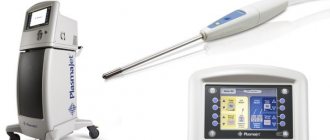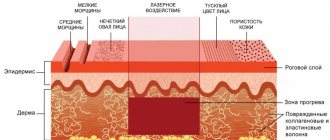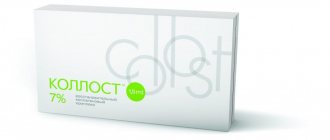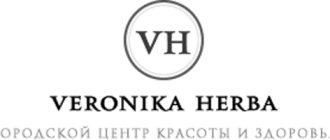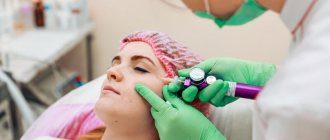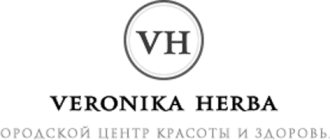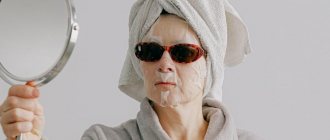Non-injection carboxytherapy is a technique for saturating the skin with carbon dioxide. Thanks to its use, it is possible to obtain an amazing rejuvenation effect.
Thanks to the activation of blood microcirculation, collagen begins to be intensively produced. This protein is the main building material for cells.
Unlike oxygen, carbon dioxide enters the skin in a much larger volume. The effect of carbon dioxide is that when it enters the skin, the body recognizes the gas as oxygen starvation and increases blood flow to that place. Blood flows to the cells and saturates them with oxygen, starting the skin renewal process.
Thanks to this, it is possible to cope with stagnation. In addition, the use of carbon dioxide eliminates inflammation, normalizes tissue trophism, strengthens cellular immunity, restores the protective functions of the skin, providing a healing effect on it.
Another excellent property of carbon dioxide is its lipolytic effect. Thanks to this, this technique helps fight double chin.
Non-invasive carboxytherapy ECO2 GEL THERAPY NeoChemir
NeoChemir was founded in May 2001. The company's headquarters are located in Japan in Minato-ku District, Kobe.
NeoChemir works closely with five departments at Kobe and Osaka Research Universities.
One of the main achievements of the company's research department was the development of DDS technology for transporting therapeutic substances using hydrogels and non-invasive carboxytherapy eCO2-Gel Therapy.
This carboxytherapy system is the only one in the world and has a huge evidence base - numerous officially registered research works, tests and experiments.
This is a patented and only system in the world for delivering CO2 to tissue to a depth of 2 to 7 cm.
This brand is the result of numerous studies and experiments, during which it was revealed not only the therapeutic effect of CO2 on healing processes, but also amazing results when the CO2 system is exposed directly to the skin.
Carboxytherapy for the face: how to use
First:
Take the gel in your hands and apply it to the selected area.
Ideally, perform preliminary skin make-up removal. The gel is applied using a syringe and distributed evenly.
Second:
Place the mask on your face.
A non-woven mask should be placed on top of the pre-applied gel layer. Lightly press it with your hands until it is completely saturated with gel.
Third:
Wait a certain period of time.
The mask should be left on for at least 20-25 minutes, after which carefully remove the mask and gel from the face and wash well with warm water.
Carboxytherapy is the choice of Queens!
This unique system runs:
- Processes of activation of intracellular respiration;
- Increases the energy potential of the cell and its level of viability;
- Energy and information exchange (signal peptides) between cells;
- Launches the system of “exploding” the smallest sclerotic capillaries of the cell, ensuring a high level of trophism of skin cells on all, including the highest layers of the skin;
- Improves blood rheology and optimal blood supply to tissues;
- Increases the strength of smooth and transverse muscles several times;
- Powerful anti-inflammatory, antiseptic and antioxidant effects.
Operating principle
Carboxytherapy is based on exposure to carbon dioxide. This component can significantly accelerate blood circulation with absolutely no harm to the body. The tissues are saturated with oxygen, which makes it much easier for beneficial microelements to be absorbed.
When carbon dioxide is introduced under the skin, rapid cell regeneration occurs. Carbon dioxide not only has a rejuvenating effect, but also a healing one. It is for this reason that it is used not only to restore aesthetics, but also for medicinal purposes. Carbon dioxide promotes the breakdown of subcutaneous fat, so the technique is sometimes used for local weight loss or giving spectacular relief.
In addition, the effect of carbon dioxide on the skin promotes collagen production. The skin becomes smooth, even and more elastic.
Regardless of what type of procedure you choose, the active substance is able to penetrate into the deep layers of tissue. The effect of the procedure lasts for a long time.
Features of non-invasive carboxytherapy
Absolute safety:
corresponds to natural physiological processes occurring in the tissues of the body.
Non-toxic:
CO2 is a natural and necessary component in the system of general and intracellular respiration. It enters tissues in the form of a hydrocomplex; when combined with hemoglobin in the blood, it releases endo-oxygen and water. Absorbs free radicals (unbound oxygen) and neutralizes the toxic effect of aggressive factors on blood hemoglobin. This is an analogy in form and content of photosynthesis at the level of the blood hemosystem.
Pronounced anti-inflammatory and antiseptic effect:
Active and immediate improvement of blood supply: dilation of blood vessels, reduction of blood viscosity and blood flow speed, and, accordingly, active lymphatic drainage of the skin. CO2 hydrocomplex has pronounced antiseptic properties.
Versatility
- Suitable for any age and skin type.
- Solves a wide range of aesthetic problems.
- It is an express system for restoring the vitality of the skin.
- It has no contraindications, complications or side effects.
Price
Carboxytherapy cannot be done in all clinics in Russia; this procedure is carried out only in large medical centers in large cities. However, despite this, this area of treatment is actively developing. The price of 1 session and the entire course depends on the level of the medical institution, equipment, treatment area, and number of procedures. B - prices for carboxytherapy sessions are quite low, so you, dear patients, have the opportunity to immediately purchase a course of treatment of 3-5 sessions.
Indications for non-invasive carboxytherapy
- photoaging and age-related skin changes;
- deep and superficial wrinkles;
- asthenic and dry skin;
- decreased tone;
- vascular changes and skin nutrition disorders;
- skin hyperpigmentation;
- acne and post-acne;
- slow skin regeneration;
- rehabilitation after aggressive rejuvenation techniques.
Properties of CO2 in the body
- Carbon dioxide is a colorless gas with two oxygen atoms and one carbon atom, odorless, one and a half times heavier than air.
- It is a normal component of the atmosphere, where it is detected in minimal quantities in the air, and in sufficient quantities in mineral water.
- It appears as the end product of biological processes: respiration, fermentation or as a result of the combustion of coal fuel.
- It has increased solubility compared to oxygen.
- Produced by cells, maintains acid-base balance and affects protein formation, cell membrane permeability, hormone synthesis and the state of the nervous, hematopoietic, and excretory systems.
- The body contains 7% CO2, which is produced in the amount of 1 kg per day and is an internal product of metabolic processes.
- It is also found in a dissolved state in blood cells - erythrocytes in the form of carbonic acid salts.
- It is distributed through the venous system and exhaled by the lungs, where the concentration of the component decreases while controlling the body's defenses.
- It is interconnected as a result of transport by hemoglobin with oxygen, with which it is in a 3:1 ratio, which creates normal conditions for the life of the body.
- When used medically, it is absorbed into the body and eliminated after 30 minutes, therefore it is absolutely and naturally safe.
Cosmetic effects of the procedure
- Lifting and smoothing wrinkles;
- Improving the structure and quality of the skin;
- Activates cellular metabolism;
- Restoring skin immunity, relieving inflammation (acne, rosacea);
- Reducing puffiness and strengthening the skin around the eyes;
- Lightening and evening out skin color;
- Stimulation of collagen and elastin production;
- Minimization and prevention of acne scars;
- Deep restructuring of the skin;
- Recovery after sun exposure and cosmetic procedures;
- Relieving stress and skin fatigue;
- Qualitative improvement of skin texture;
Visible results are achieved after the first procedure. After the course (from 4 to 8 procedures) – a long-term effect of restoration and revitalization of the skin.
Contraindications and adverse reactions
You will have to refuse a cosmetic procedure with carbon dioxide in case of severe neurological pathologies, after a heart attack or stroke, in case of blood clotting disorders, in case of cancer, in case of acute infectious diseases, or exacerbations of any chronic pathologies. Pregnant and lactating women should also not undergo carboxytherapy. Injections are prohibited for neoplasms or skin lesions at the injection sites.
During a non-injection therapy session, a slight crackling sound may be heard and a slight tingling sensation may be felt on the skin. After the procedure, short-term irritation reactions are possible:
- swelling;
- redness;
- slight burning sensation;
- slight soreness.
Due to active blood circulation, acne and pustules may appear in the first few days after the first sessions. The listed symptoms are a normal reaction of the body. They all go away on their own within 2–3 days.
Combination with procedures
Non-injection and invasive carboxytherapy combine well with other cosmetic techniques.
- General hardware techniques - phonophoresis, electroporation, microcurrent therapy - to consolidate the result and enhance metabolism.
- Injection drugs - mesotherapy, plasma lifting, fillers, threads, Botox, lipolytics - for rehabilitation and enhancing the effect.
- Chemical peels, microdermabrasion - to stimulate cellular restructuring.
- Radiofrequency lifting, endermology, cryolipolysis, photo and laser rejuvenation - for prolonged action.
- Surgical methods - liposuction, blepharoplasty, circular facelift - for rehabilitation and tissue restoration.
Kinds
Non-invasive carboxytherapy is a transdermal method of saturating the skin with carbon dioxide using special means - a mask with the main component - a carbon dioxide molecule and additional substances: hyaluronic, fruit acids, vitamins, plant extracts to increase nutrition and hydration of cells. The technique does not damage the barrier functions of the skin and does not injure soft tissues.
MESOMATRIX non-invasive carboxytherapy systems - for aging skin and problem skin.
Invasive carboxytherapy is the intra- and subcutaneous injection of carbon dioxide using a special device with thin needles for renewing and rejuvenating effects. Manipulation is popular as it provides long-lasting healing results and rapid delivery of gas to the points of influence.
Execution technique
A non-invasive method is a way to quickly improve facial health, which is carried out in a salon or at home, following the following steps.
- Makeup removal and toning.
- Application of light enzyme peeling.
- Distribution of a special conductive gel to open pores and penetrate active components.
- Apply a carbon dioxide and fabric mask for 15-30 minutes.
- Removal of the active mixture and treatment with serum and nourishing cream.
The injection method includes certain details:
- Consultation with a specialist, collection of anamnesis, identification of contraindications.
- Inspection of areas, selection of quantity, concentration and total dosage - no more than 1000 cm3.
- Cleansing and antiseptic treatment of areas of application with hydrogen peroxide.
- Connecting the device through a safety valve with attachments to alleviate pain and checking the foot pedal or handle for supplying the substance.
- Carrying out injections at a distance of 1-2 cm from each other using a disposable ultra-thin needle measuring 30-32 G using medical sterile carbon dioxide, which enters the diffuse gun from a metal cylinder through a pressure regulator with an indicator of 1 Bar - 0.1 MPa.
- The length of the needles is selected individually - for the face, neck, décolleté - 4-6 mm with an insertion angle of 15-30 degrees, for the body - 12-13 with a puncture angle of 30-45 degrees. After 8-10 injections the needle is changed.
- Injections are performed intra- or subcutaneously, with ante- or retrograde movements at a speed of 5-20 ml/min with precise control of carbon dioxide intake. To rejuvenate the epidermis and strengthen hair follicles, the insertion depth is 1-2 mm, to eliminate stretch marks - 5-6 mm, to treat cellulite - 3-10 mm.
- The procedure time is 20-40 minutes with a total volume of gas intake for the face - 5-50 ml, for the torso and limbs - 200-1000 ml.
- Assessing the patient’s subjective feelings, carrying out repeated disinfection and issuing recommendations after the procedure.
Recommendations
With non-invasive carboxytherapy, a rehabilitation period is not required.
When injecting carbon dioxide, you must:
- do not wash your face or apply decorative cosmetics for 4-6 hours;
- for 12-24 hours do not sunbathe, do heavy physical exercise and do not visit the bathhouse, swimming pool, sauna;
- use healing agents if necessary (for example, Panthenol, Bepanten creams);
- Observe the drinking regime before and after the course, adhere to proper nutrition and a healthy lifestyle.
Course protocol
- Rejuvenation, lifting, hair growth restoration - 5-12 procedures 1-2 times a week.
- Cellulite and subcutaneous fat deposits - 1-3 procedures 21 days before surgical liposuction, then 10 days later for 2 months 2 times a week or 8-12 procedures 1-2 times every 7 days.
- Stretch marks, scars - 8-12 procedures once every 7-20 days.
- Maintenance course - once a month
- Repeat intensive treatment - 1-2 times a year.
The effect of hypoxia on the skin
The main consumers of oxygen are the brain, kidneys, and liver. Of course, they are primarily supplied with blood and oxygen.
When there is a lack of oxygen, the skin is the last to receive it.
- Cell division slows down and physiological renewal in the epidermis and dermis is disrupted, which provokes deterioration of color (asphyxtic skin), loss of skin turgor, and impaired melanogenesis.
- Chronic hypoxia or the entry of oxygen into the skin from air contaminated with various pollutants activates the production of free radicals that trigger an inflammatory cascade, disruption of angiogenesis, skin microflora, and accelerated aging.
- Lack of oxygen in the skin affects the activity of various biochemical processes, weakening the barrier and thermoregulatory functions of the skin, leading to dysregulation of the immune response and premature aging.
- Cell division slows down and physiological renewal in the epidermis and dermis is disrupted; complete oxidation of organic substances does not occur and, when accumulated, they cause intoxication.
- Keratinocytes produce insufficient amounts of ceramides, structural proteins (involucrin, loricrin, filaggrin), pro-inflammatory mediators (chemokines, cytokines), leading to dry skin, disruption of its barrier properties, negatively affecting its relief and color.
- In the dermis, when cells are starved of oxygen, aggregates of collagen and elastin fibers accumulate, the structure of the matrix changes, leading to a decrease in the elasticity and turgor of the skin, and the appearance of wrinkles.
Clinical examples
1. Patient, 32 years old. The skin is flabby, dehydrated, with wrinkles in the lower third of the face, forehead, and eyes.
An 8-week course of procedures was prescribed with an interval of 1 time per week with additional moisturizing and protective care.
Result: reducing the depth of wrinkles, improving the quality of the skin, increasing smoothness and tone.
2. Patient, 35 years old. Cellulite grade 2-3, decreased turgor.
15 combined sessions were prescribed: superficial and deep injections at intervals of 1-2 times a week, recommendations were given on proper nutrition and exercise.
Result: reduction of local fat deposits, smoothing of the epidermal relief, increase in elasticity.

